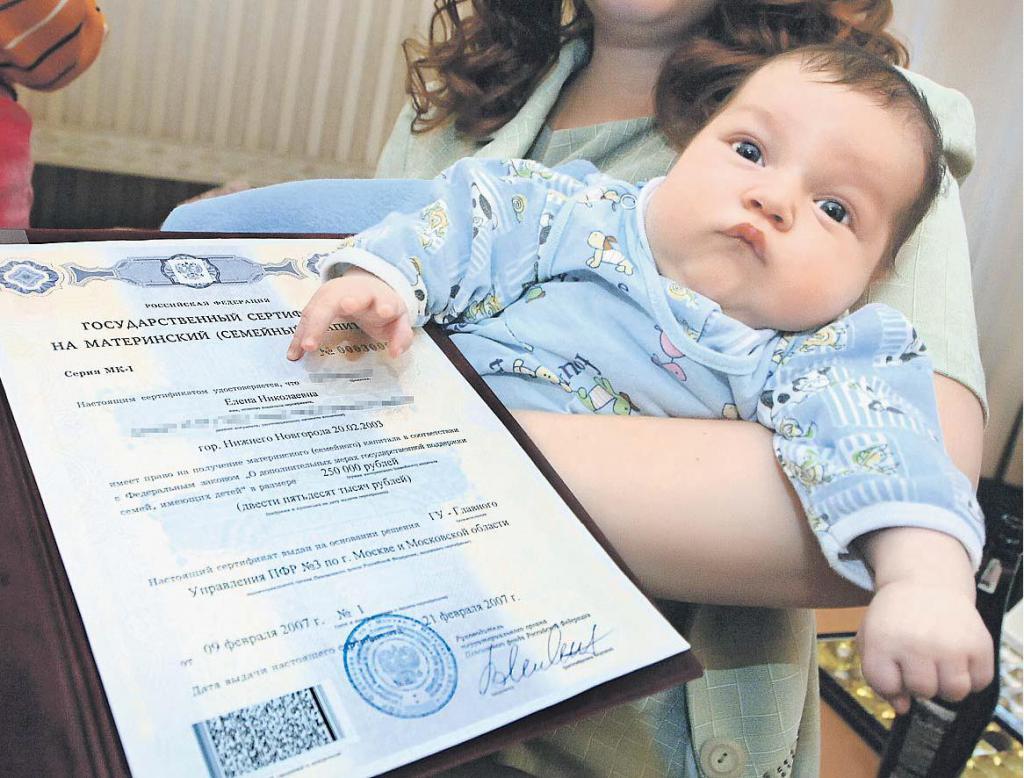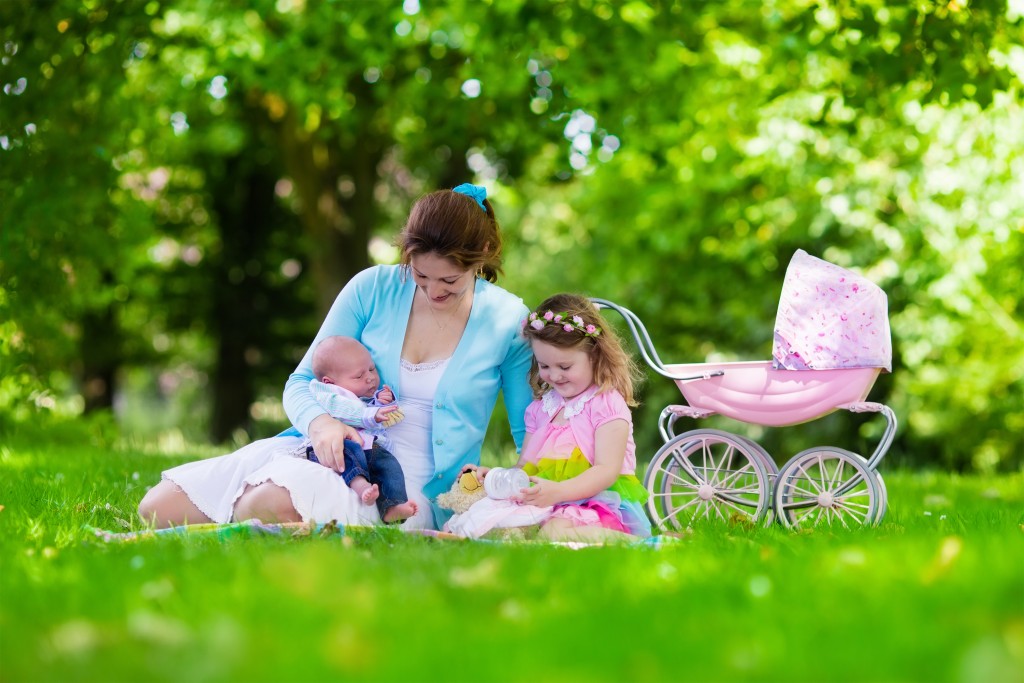2018 is full of surprises. The lump-sum payment of maternity capital has become a hot topic of discussion. According to the statement of Maxim Topilin, Minister of Labor and Social Protection of the Russian Federation, such payments are not provided for in 2018. A separate law was issued for each lump sum payment, which extended its effect only to the current year. However, there will also be no complete refusal to families that have not spent maternal capital. What to expect in 2018, the new law will show.
A bit about maternal capital
To reduce the demographic crisis in the country in 2007, a program was launched to support families who dared to have a second and subsequent children. In previous years, the birth rate in the country decreased so critically that it was significantly overtaken by mortality statistics. If no measures had been taken to support families with children, the reduction in the population of our country in a few years would be catastrophic. The country was threatened by a fairly quick replacement of the indigenous population by emigrants. To prevent this, the deputies of our country have developed and adopted a law to support families wishing to have more than one child. This program very quickly got the simple name “mother capital” among the people. If at first the euphoria was widespread, then gradually, taking into account the spread of news about this program, the enthusiasm greatly diminished. Only those whose plans included having a second child decided not to put the matter back on fire, if there was also the opportunity to have considerable benefit from the state.
The term for this program was set at 10 years. But over time, the Government of the Russian Federation, observing the beneficial effects of the program on the growing population, proposed to extend it for another 3 years. Thus, everyone who has time to become parents again in 2018 will still have time to take advantage of these benefits. The deadline for issuing the coveted certificates will end on December 31, 2018. The term for withdrawing maternal capital is not limited by time frames. That is, if this document appeared in the family, you can spend money on it after the child reaches the age of 3 years. Or at any convenient time after this time. You can keep the certificate intact until the child reaches the age of eighteen, if inflation is not scary. The total amount of maternity capital indexed for the last time in 2015 is 453,026 rubles. By decision of the Government of the Russian Federation, this amount will remain unchanged until 2020. This is due to the crisis, which has penetrated into all financial spheres of our state. However, during the program's operation, the amount of maternal capital increased by 81%. Nevertheless, citizens with a certificate claim that the amount of maternity capital in 2018 should be approximately 530,000 rubles, and by 2020, with this option for the development of the economy, it should increase to 700,000 rubles. Have citizens lost money, which, in fact, never belonged to them, is decided only by those who will spend it. Dreams in our country tend to remain an illusion, but, despite the well-known saying, they still bring, if not harm, then deep disappointment. This program, designed to bring only good to people, did not have a better impact on the population.
Recall what is this same maternal capital? It is issued to a mother who has become a parent a second time or more times.In this case, the child can be both native and adopted. The only difference is that at the birth of a child, a certificate can be used only after the child reaches the age of three, and during adoption they look not at the age of the child, but at the time of his stay in the family. This period is also calculated in three years, if during this time the child does not reach adulthood.
One woman can receive this certificate only once. Only the number of children affects the certificate. How many times a woman has been married and whether she has ever been taken into account is not taken into account. If children born before do not live with their mother, then this child will be considered the first. If you lose your second child before reaching the age of three (his death or deprivation of parental rights), the certificate expires. In the case of using funds from this resource, the mother will have to reimburse the entire amount spent by the state, and also answer the legitimate question - who helped spend the funds, which should have remained untouched all this time. These actions fall under the article with the unpleasant title of “fraud”.
If the next child appears in the family during the course of the program, then he is no longer participating in it. It is worth considering that legal guardians should not count on maternity capital at all. To participate in the program, the child must be officially adopted. Only in this case can you apply for a certificate. Only the time spent in the family by the child as an adopted, not a guardian, is taken into account. Thus, the family can only use the money three years after the official adoption.
These funds can only be spent when the child reaches the age of three. The use of these funds is targeted, that is, it cannot be spent on everyday needs. The program clearly states that they can be used only in several cases: for the purchase of new housing or major repairs at the place of residence. Funds can be spent on the education of the child, not only the one for whom the money was received, but also previously born or adopted in this family. This may be a payment for the upkeep in an educational institution. It can also become social assistance for the maintenance and adaptation of children with disabilities, the acquisition of medical equipment for them. Or you can put this money in the Pension Fund as a funded part for mom. Pension funds as the main guarantors of this document often offer this particular service, motivating certificate holders that in old age they can be a burden for children. With the same amount, they can count on a fully secured old age. But no one will ever say what this money will cost when a woman of childbearing age gets on a well-deserved rest. At the same time, there is no information anywhere on how these funds will be distributed if, for some reason (for example, sudden death), the owner of the money herself cannot fully use them. As we see, it is not so easy to cash out these funds or, rather, it is completely impossible, since any transaction with this money involves non-cash payment.
Program Continuation
In the Government of the Russian Federation, the issue of extending the program of support for families until 2023 was submitted for consideration. For some deputies, this seemed impractical, since a similar law, in their opinion, would again lead to a decrease in the birth rate. Proposals were made to extend the program only in areas where fertility continues to be low. This is due to the lack of incentive to quickly get a second and subsequent child to get into the program. But in 2019, it is supposed to make changes to the program with the payment of maternity capital.Thus, there remains hope that those who did not have time to have a second child before the end of the project will fall into another, no less worthy program.
Unconfirmed facts

In 2017, a rumor spread that the Government of the Russian Federation made a decision on a one-time maternal capital supplement of 250,000 rubles for mothers who had a second child, but only if they were not yet 35 years old. This rather big payment should go to any needs that are not tied directly to maternal capital. This information has spread from a health-related site. The article indicated information that did not correspond to reality. And yet, despite unofficial data, this article was very popular among bloggers. Everyone who got into the program wanted to receive this rather big allowance. However, this rumor was not commented on in the State Duma. Apparently, even the persons mentioned in the article were not aware that this bill was generally submitted for consideration.
First payouts
In 2015, it became known that a lump sum payment from maternity capital could be received. Then this amount was 20,000 rubles. It was given to families who did not spend maternity capital to zero. If the account had an amount less than 20,000 rubles, then it was transferred to the account of the holder as a balance and the certificate was closed. Many families hastened to take this opportunity. In June 23, 2016, Law No. 181-F3 "On the lump-sum payment of maternity capital" was adopted, as the country was overwhelmed by the crisis. True, the crisis has been in the country for several years, but the government decided to help families with children again, based on the information that the children are in a very critical situation. Now it was 25 thousand lump-sum payments from maternity capital. The amount was indexed taking into account current inflation. Many families began to wonder how to receive a lump sum payment from maternity capital. Is it possible to get a one-time allowance a second time, and what can be spent on them. It was impossible to simply cash out these amounts. For this, it was necessary to write an application to the Pension Fund of the Russian Federation, collect the necessary package of documents, submit them at the place of residence and wait for the decision of representatives of the executive branch.
Nevertheless, these payments were expected to any family that received a certificate no later than September 30, 2016, who did not select all the funds from the parent capital. These amounts were paid to families with small children, who, during the acute crisis of 2013-2014, found themselves in a very difficult financial situation. The money is small, but they helped some families pay off their debts, collect their children in schools, etc. In part, this small amount could be spent on everyday needs, which was prohibited by the basic law on social assistance to families with children. These funds were received by the family with a long delay - a lot of time was spent on collecting and submitting documents, then the items of expenses submitted to the population support services were considered. Only after that payments were made.
Taking into account inflation and constant price increases, the amount depreciated significantly in comparison with the initial opportunities. This situation could not but cause discontent among the population. And yet, those who were, for whatever reason, not in the category of citizens who were even entitled to such a small payment, were even more unhappy.
In an environment where half of the country's families buy the necessary things on credit, when in order to collect one child to school, all grandparents are thrown off, and for the second and subsequent children they have to beg for money from the state, such payments are more likely to disappoint everyone - and who receives and who is denied.Opportunities are provided with so many restrictions that many people simply don’t have the patience to go through all instances.
Payments in subsequent years
In 2017, there were no lump-sum payments from maternity capital. The Government of the Russian Federation justified this fact by the fact that inflation in Russia decreased, prices stabilized, the country gradually began to emerge from the crisis. The situation with jobs and timely payment of wages has stabilized. The question is whether the lump-sum payment of maternity capital will be paid next year remains open. It should be noted that this law was in the nature of a one-time action. That is, a lump-sum payment of 2500 maternity capital was provided only for 2016, not covering the entire duration of the program. However, in 2017, payments of 25,000 rubles from maternity capital continued to be made. These were payments issued in 2016, only reaching their owners.
Nevertheless, people who were unable, for objective reasons, to get their money, as well as those who managed to use these funds, asked to renew the opportunity to withdraw cash from maternity capital. The value of the amount of maternity capital was decreasing every year, and the constant needs of families with growing children increased. The desire to at least partially use the constantly depreciating capital is understandable and justified from the point of view of common sense. Perhaps the funds themselves were originally not intended for such purposes. Many families dreamed that they could pay for the education of children. Someone was sure that they would be able to buy an apartment or their own house. However, over time, dreams evaporated, leaving behind a bitterness of resentment that there was an opportunity, but it did not work out. So people tried to somehow get the money that lay dead and constantly depreciating cargo.
New Law - New Rules

In this regard, a proposal was put forward for consideration by the State Duma, which led the masses to embarrassment. In 2018, a lump-sum payment from maternity capital will not be paid. They decided to replace it with a monthly payment. It will not be provided for each family, but taking into account the distribution of funds received for each family member. This will be calculated from all income divided by the number of people in the family. If for each member of the family with such a distribution there will be less than 1.5 living wages, then the family is guaranteed to get access to money. And since the wages of our population are not too high, it can be assumed that almost all families with more than one child fall under this article.
In addition, only those families in which the second or subsequent child was born after January 1, 2018 will be able to receive these benefits. This law was adopted by the State Duma on December 21, 2017, on December 26, 2017, it was approved by the Federation Council and signed by President of the Russian Federation Vladimir Vladimirovich Putin on December 27, 2017 under number 418-ФЗ. It is noteworthy that payments are guaranteed to families where the first or second child was born / was adopted on or after January 1, 2018. This payment is calculated from the living wage for children provided for in the region where the family lives. As we can see, these payments apply not only to the second child, but also to the first, that is, to families where there are no certificates of maternity capital.
So the question is whether the lump sum payment from the parent capital will be more or less clear. But it remains unclear where the funds will be taken for monthly payments. For this, it is worth again referring to the law considered earlier.
As we see, in accordance with this law in 2018, lump-sum payments of maternity capital were replaced with a monthly allowance.His articles clearly state that payments for the first born child come from state funds. But the second and subsequent child who entered the family social support program will be supported by maternity capital, lump-sum payments of which are replaced by monthly payments. That is, the allowance itself will be paid by the state, but an identical amount will be deducted from maternity capital to the state’s account. In this situation, the families where the first child appeared are in a better position, since the state allocates funds for them. On the other hand, for families providing monthly payments from maternity capital, it is also not easy to make a choice in favor of a single payment or monthly. For young families with an income below 1.5 living wages per person, a monthly payment is more preferable. In various regions, the cost of living per person can range from 8,000 rubles. up to 15 000 rub. In different areas, the subsistence minimum is set based on the prices of vital products for one family member. For children, this minimum is different in a smaller direction. Nevertheless, it can be assumed that an increase in family income of about ten thousand rubles is a significant help.
Pros and cons of monthly payments

On the other hand, the law on the lump-sum payment of maternity capital is one-time in nature. Monthly waste can lead to zeroing of funds. Then, in accordance with Article 6 p. It turns out that when replacing the lump-sum payment of maternal capital with a monthly one, this resource may well be reset. And yet, only families with the treasured certificate should decide how to manage these funds. It is worth considering that any money withdrawn from maternal capital in 2018, with lump-sum payments or not, bears the burden of reporting on what exactly these funds were spent on. In the case of misuse of these payments, local executive authorities may stop receiving money at any time. You can find out in detail what expenses are non-targeted in local executive bodies, as some regions are loyal or strict in executing the letter of the law.
Monthly Payout
You can try to calculate the amount of payment by contacting the social support authorities of the region of residence, since each region has its own living wage. The national average is 11,200 rubles per adult and 9,600 rubles. - per child. The family in which the child appeared after January 1, 2018 can roughly count on the second figure. Since these are average figures, in different regions the money actually received can be quite different from those presented here.
Opportunities for citizens

It is worth noting the injustice of this decision in relation to those children who were born a few days before the Law entered into force. Such families would not be at all hindered even by lump-sum payments of maternity capital for support. Any family would find where to spend such an amount, while it still has at least some value in a world where the economy is changing its course as a capricious lady. However, the Russian Government is convinced that the country has come out of the crisis, people began to receive stably worthy money, so there is no need for additional payments. Based on closed opinion polls, the Government makes decisions that do not always benefit the people.
A one-time payment of maternity capital in 2018 is possible if the family is going to spend the money for the intended purpose. Its amount is not fixed, but depends on the needs of the family in using the funds provided.However, it is worth recalling that any amounts extracted from maternity capital, whether fixed or not, should be spent in accordance with the law on support for families with children. Namely: to acquire new housing or to repair an existing one; pay for the full-time education of the first child or stay in a special educational institution, as well as adaptation measures for children with disabilities. For consideration by the State Duma, a project was put forward on the possibility of a lump-sum payment of maternity capital to pay off mortgages. Due to the fact that acquiring decent housing these days is practically impossible without this loan, this article would be very useful for families who already have a mortgage. However, there is still no news of the adoption of this law.
More on the new law

What other news on maternity capital can be noted? It became possible to pay with these funds for preschool services, without waiting for the child to be 3 years old. For example, it became possible to hire a nanny or tutor for this money. This money can also be used to pay for a child’s stay in a nursery, kindergarten, even if they are private. The action of the program itself was decided to be extended until 2021 inclusively. The conditions for obtaining maternity capital remain the same. For families covered by this program, preferential rates for paying a mortgage loan are provided at 6% per annum for a period of 3 years for families where a second child has appeared, and for 5 years if this is a third child. That is, the possibility of early payment of a significant amount of this loan with money from maternity capital is not yet discussed. Also, families participating in the maternity capital program have the opportunity to refinance previously taken mortgages on the same conditions - 6% per annum for the periods indicated above. However, lump-sum payments of maternity capital are no longer provided for. And the indexation of the amount of maternity capital is frozen until 2020.
As for the problems associated with the birth rate, because of which the whole program was started, it was not fully resolved. Families who fall into this program do not feel protected, openly express their dissatisfaction with the inability to use this money at least to pay for large household purchases - washing machines, refrigerators, computers, etc. Families where there is no transport would also like to be able to pay at least the most low-cost vehicle with maternity capital. Less than 1% of holders of a certificate of maternity capital chose to put money on an accumulative pension part. This is not at all surprising with the annual surprises in the economy of our state and the fuzzy presentation of information about what will happen to the money if its owner is not able to take full advantage of it.
Opinion of the people

Ideally, people would like to receive stable and decent content for children from the state, which is so rich in natural resources and completely depleted of human resources. In some countries that do not have such a great asset as in our state, children receive money at birth, which, as they grow older, turn into real capital, which from the time they come of age will help them to be completely independent people. At the same time, parents receive decent compensation, regardless of the size of the pension. It is children who are the main heritage of those countries that we would very much like our government to be equal to.
The children of our state are not yet a valuable resource, for which it is worth taking responsibility from birth. Thus, many families who had one child before 2007 did not rush to get a second, quite clearly realizing the weaknesses of this program.
Depreciation of maternity capital
At the moment, the program is designed for people who are not in poverty. After all, the family may not receive cash in cash.For the sake of cashing out maternal capital, while it is still worth something, people are taking not too legal actions. According to statistics, most of the funds were cashed in one way or another in the first years of the program. At the same time, people lost significantly in money. However, no one gives a guarantee that when they have the opportunity to use this money, they will still be in price. For example, at the beginning of the program in 2007, the amount of maternity capital was 250,000 rubles. In 2007, the price of a 2-room apartment in the regional city was 180,000-350,000 rubles. In 2010, when people had the opportunity to use these funds, the amount of maternity capital was 347,378 rubles, and the cost of the same apartment was 700,000-900,000. Now the same apartment costs 1,400,000-2,200,000 rubles. The depreciation of this certificate is quite obvious. That is why people are in a hurry to somehow take this opportunity. Most likely, in 2018, due to the entry into force of the new program, due to monthly payments, the number of certificates will be reduced significantly.
At the same time, the injustice in relation, for example, to previous children or subsequent ones is also too noticeable to be ignored. There are cases of separation of families that fell under this program. Children grow up and begin to ask their parents what the funds received at their birth were spent. Despite their young age, children are well aware that the money that their parents received or can receive is not a small amount. Explain to the child what to buy with this money inaccessible sweets or toys, take him to the sea or buy a computer, no one will allow them. When the children begin to appreciate the money, it turns out that the amount received for their birth was spent on the needs of older children, while his own are only coming, and there is no money left for their solution. So a big problem is brewing in the family from a still small child.
It is difficult to judge how to evaluate this program from the point of view of moral principles, not to mention material ones. Someone thinks that this program would not have been better, since getting money is almost impossible anyway. Someone complains that he could not fall under her criteria. However, dissatisfaction with the program is most likely due not to its shortcomings, but to the instability of our state’s economy, in which no one-time payments of maternity capital save families from constant need.

